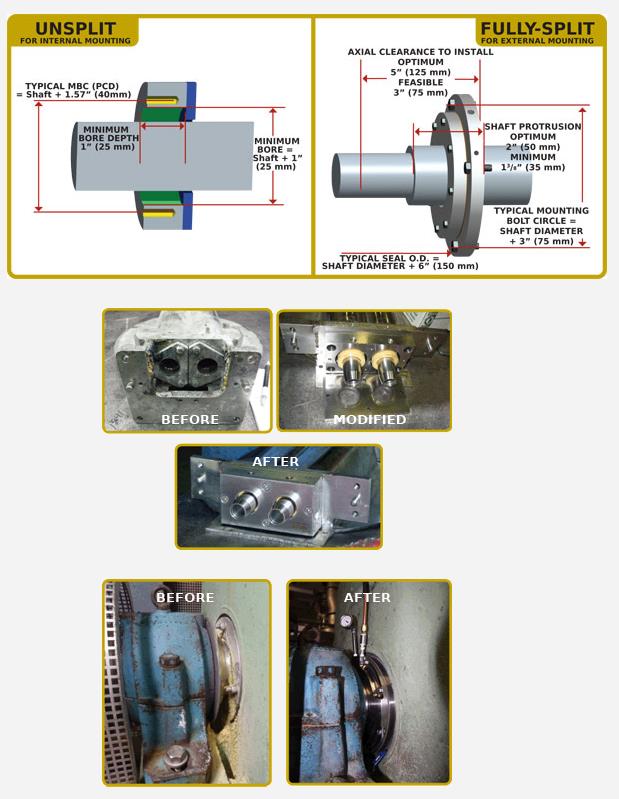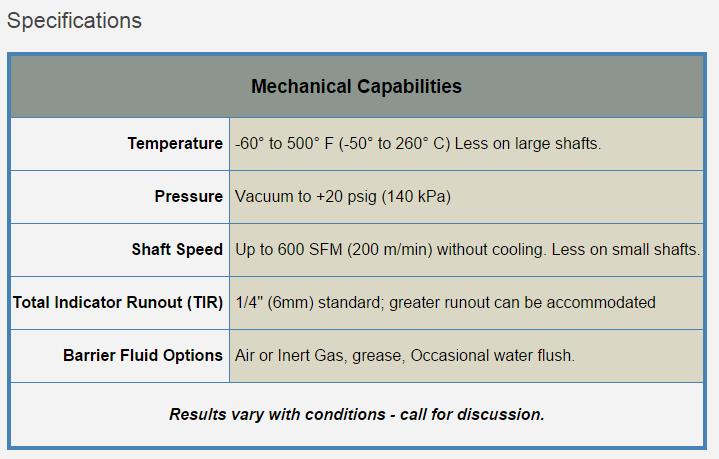Eliminate Setting Seal Face Pressures
What Is MECO’s AH Seal?
The MECO AH Type-2 model is the best choice for fitting a split seal in limited space on small to large shaft diameters. The configuration is a double mechanical seal using an elastomer drive to rotate bearing-grade synthetic seal faces against fixed, stainless steel seal faces. The AH Type-2 uses a barrier fluid to pneumatically load the seal faces and isolate the process from the atmosphere. The AH Type-2 is suited for MRO and OEM equipment.
When Are AH Seals The Best Option?
The MECO AH Type-2 seal model is the answer to the question, "How can we fit a split or unsplit face seal in the existing space?" The seal model is used on horizontal, inclined and vertical shafts. The seal design is applicable when an inert barrier fluid is required to isolate the process from the atmosphere. They are used on blenders, bucket elevators, some polymer extruders, and both ends of a screw conveyor. Two unique configurations following the core principles are available. The seal may be designed to fit between the gear reducer and trough end of a screw conveyor, as shown below.

How Does The AH Seal Model Work?
The AH Type-2 seal model incorporates separate inboard and outboard stator housings acting as the stationary seal faces. Between the stators is a rotating seal face assembly, consisting of two rotors with a driving elastomer between them. By completely tightening the stators together to compress against the two rotors and squeezing the drive elastomer to the shaft, we form an interlocking, watertight seal. As the drive elastomer interlocks with the shaft and rotors, a dynamic contacting face seal, behaving mechanically as a thrust bearing, is created. The low-friction rotor seal faces are at right angles to the shaft and in full contact with the stators, forming the rotating seal plane between the rotors and stators.
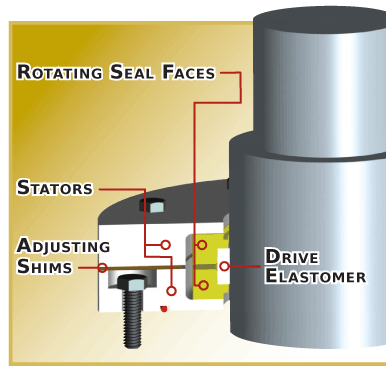
The seal cavity is typically charged with compressed gas, which acts as a barrier fluid to provide pneumatic seal face loading. The two stator housings are typically separated by a stack of 1/64" (0.40mm) thick shims to provide a method of adjustment.
How Is The AH Seal Maintained?
A pressure regulator is included with the seal to set inlet seal cavity pressure. A pressure gauge is attached to the inboard stator to monitor actual seal cavity pressure.
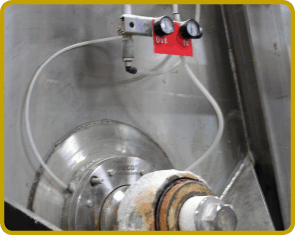

The seal cavity is charged with low pressure air or gas, which acts both as a barrier fluid and provides pneumatic seal loading. An access port is typically provided so the seal can be blown free of contaminants. A drop in seal cavity pressure indicates a need to inspect the seal. Pressure can be restored to normal by removing an adjusting shim, replacing the drive elastomer, or, if rotating faces are worn, by rebuilding the seal.
What Sizes Are Available?
The MECO AH Type-2 seal model is custom-designed and built to order. Typically, assemblies are fully-split. Shaft diameters range from ¾" (18mm) to 20" (500mm) and all sizes in between. Our typical space requirement is 2.5" (65mm) around the shaft and 4" (100mm) along the shaft for an easy split seal installation. Much smaller values are possible. Fig.1 is a design following USDA manufacturing guidelines; Fig.2 is a design meeting application-specific requirements for explosion protection following the European ATEX directive. The seal can be built into modified equipment components or simply swapped with existing seal housings, eliminating the need for equipment modifications, see Fig.3.
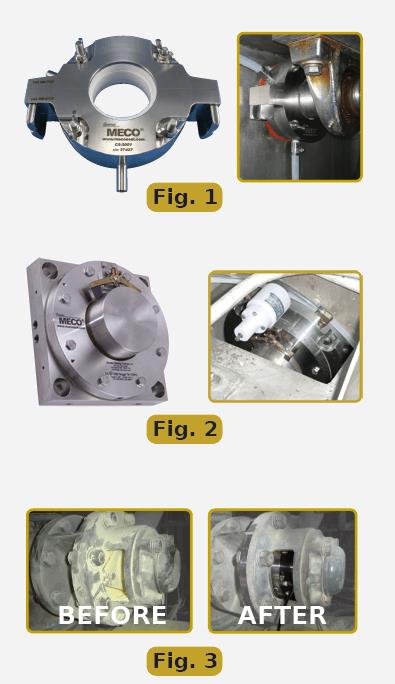
What construction is available?
The MECO AH Type-2 seal is manufactured in several housing-stator combinations. The standard is an AH Type-2S, using integral 300-series stainless steel stators. The AH Type-2T consists of aluminum housings with replaceable 300 series stainless steel stators attached. Hardened stainless steel is also a stator material option.
The AH Type-2AP (not shown) uses one or two 1/8" (3mm) thick stainless steel stator(s) with an extra-thick central housing or stator. Space, assembly and equipment restrictions dictate the need for the AH Type-2AP approach.
The common rotor seal face material is MECO 3000, a high-performance, bearing-grade, polymer-filled PTFE with FDA approval. Other options are: bearing grade PEEK; ceramic filled PTFE; virgin PTFE & UHMW. The different elastomer options available are Silicone, Viton®, EPDM and Nitrile, with all having an FDA-compliant option.
Since Woodex’s MECO Seal division manufactures many custom shaft seal models, we have the capacity to fabricate from any material required. If looking for an "off-the-shelf" version of the sealing approach, please check our MECO HB model seal as a viable option.

Viton® is a registered trademark of E.I. Dupont de Nemours & Company
